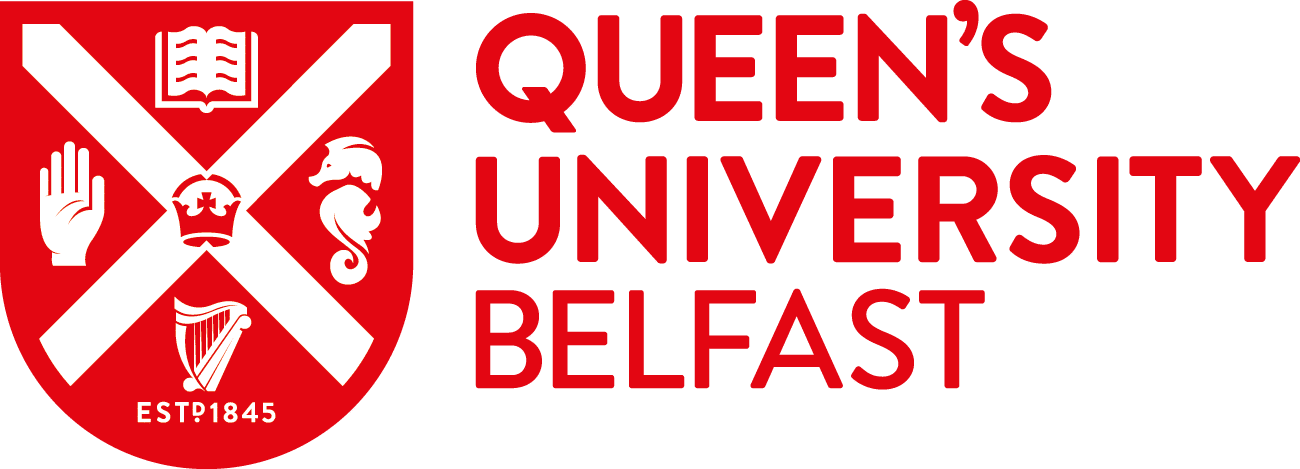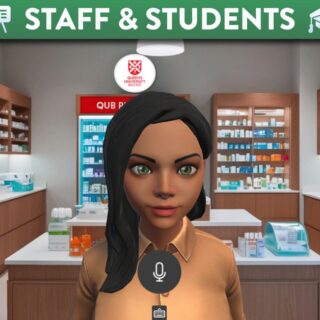
Assessment Practice
You may be taking time to reflect on the assessment practices within your module or programme and looking for some inspiration from academics who have been developing and implementing successful, innovative and novel approaches to assessment here at Queen’s University. The QUB Assessment Hub is an online bank of Case Studies compiled by the Centre for Educational Development. It focuses on assessment methods and strategies used by staff within Queen’s, as well as those used in other higher education institutions in the UK and around the world.
Below is a selection of Case Studies written by QUB academics to give you some ideas of assessment practices that are being successfully implemented locally. Case Studies are listed by category to direct you towards those that may be of interest if you have similar needs within a module or programme that you are involved in. Hopefully, you will find some inspiration and ideas that you can implement over the coming semesters to successfully enhance the assessment approach of your own teaching.
Hopefully these case studies will provide some useful insights and ideas! Please let us know if there are any you found particularly interesting at elearning@qub.ac.uk.
If you have your own example of innovative practice that you would like to share as an Assessment Hub Case Study please use the Case Study Submission Form.
Peer Review
Summary: This case study describes a novel procedure for feedback in group projects in a Product Design and Development (PDD) undergraduate course. A procedure was developed which utilised the structure of the PDD degree to provide a mechanism for enhanced feedback in group project work. Frequent face-to-face feedback interviews were introduced and student development of self- and peer- evaluation skills was observed.
🔗 Peer Rating for Feedback in Group Projects
– (J Paul Hermon Charles D McCartan, MAE)
Summary: In an undergraduate mathematics module, students work in teams of three or four (chosen by the lecturer) to write a short piece of computer code. The aim is to solve a mathematical problem, generate and analyse results therefrom, and finally to compose a written report on the project. The assessment of the project is worth 50% of the module total (the other 50% coming from a class test). This 50% is broken into three components: 30% for the written report, 10% for an oral exam and 10% for the peer review mark.
🔗 Implementing peer review marking as part of group work activities
– (Andrew Brown, MAP)
Summary: This study describes the redesign of the delivery and assessment of a first-year undergraduate mathematics module. The aim was to build student confidence by encouraging them to take greater responsibility for their learning through the use of self assessment, peer review and reflection on the quality of their work and learning. Students were required to keep a log book in which they would attempt a worksheet each week before attending a feedback session to ensure engagement with tasks on a weekly basis.
🔗 Formative assessment in first year mathematics through peer review and reflection
– (Cole, JS, Fraser, K., MAE)
Summary: In this case study, students are guided through the use of several web applications and tools to create a Microsoft SWAY-based resource that is used for peer learning. Students create a video (using screen capture with voiceover) detailing the anatomy of a specific region, they must incorporate a mnemonic, relevant summarised case from the literature and an assessment element. These elements are embedded within a “SWAY” which are shared among the class and marked by peers and lecturers. The aim of this assessment is not only to foster detailed anatomical knowledge but also to develop communication, digital literacy and critical evaluation skills. This case is transferrable to any subject, training documents and an example SWAY are available via links in the case.
🔗 Fostering digital skills and peer teaching: Integration of a digital media project based in Microsoft SWAY into an anatomy module
– (Dr Eva Sweeney, MDBS)
Student Skills Development
Summary: For computer science and many other disciplines, a student’s university career is concluded with a capstone project. A demonstration of a student’s skills and a validation of their ability to work independently on a substantial piece of work. Students often learn a great deal during their projects and the experience is valuable for obtaining their first job in graduation as it is similar to experiences they may have in the workplace. This case study describes a new module that provides a final year project-like experience for first year undergraduate computing students.
🔗 Climbing Everest: Encouraging student resilience, long-term motivation, and lasting value in challenging projects.
– (Dr. John Bustard, Dr. Zara Gibson, EEECS)
Summary: This paper discusses methods and tools used to accurately and efficiently measure learning outcomes relevant to personal and professional skills. It describes how these skills can be assessed in group projects and comments on the effectiveness of the methods and tools used.
🔗 Assessing the development of personal and professional skills in group projects
– (J Paul Hermon Charles D McCartan, MAE)
Summary: This case study describes the design, development and operation of a workshop-based approach for the enhancement of entrepreneurial skills within Pharmacy students. Students were required to develop their own pharmacy-related entrepreneurial idea, including the synthesis of a business plan, and development of a marketing strategy. The students then pitched their ideas to academic pharmacists with experience in business.
🔗 Developing Entrepreneurial Skills in Pharmacy Students –
(Lezley-Anne Hanna, Garry Laverty, Sharon Haughey, Carmel Hughes, SOP)
Summary: This study describes a new method of assessing undergraduate ability to check extemporaneously dispensed products for clinical and formulation errors. The activity also aimed to consider whether it is a viable method of assessment in such a science-based class, from a staff and student perspective. Students rotated around a number of stations, performing a check of the product, corresponding prescription and formulation record sheet detailing the theory behind the formulation. They were assessed on their ability to spot intentional mistakes at each one.
🔗 Development of an Objective Structured Clinical Examination (OSCE) to assess formulation and extemporaneous dispensing skills in Mpharm undergraduates –
(Fiona Hughes, Johanne Barry, Luc Belaid, Corona Cassidy, Lezley-Anne Hanna, Paul Mccague, Helen Mcphillips, Anne Overell, Carole Parsons, Ryan F. Donnelly, SOP)
Assessment & Feedback
Summary: In 1st and 2nd year Engineering classes, automated feedback methods were introduced and compared to ‘manual’ approaches. Semi-automated assessment was used to review CAD models and assessment workbooks. Approximately half-way through the year audio feedback on their work was offered to each student in the class. This process improved efficiency and resulted in consistently high quality and timely feedback.
🔗 Time Efficient Assessment and Feedback Methods for Large Computer-Aided-Design Cohorts
– (Robinson, T. T., Thornhill, D. J., Hermon, J. P, MAE)
Summary: This case study details the approach of inviting students to collaborate in the process of setting their own summative assignment questions. The purpose is to give material form to principles of democracy in the classroom and to make explicit the learning outcomes that underpin summative assessment.
🔗 Demystifying the assignment question: a democratic and collaborative approach to assessment
– (Dr. Jim Donaghey, NBE)
Quizzes
Summary: Group-based ARS quizzes were integrated into an undergraduate civil engineering course on foundation design. Students believed that the group-based quizzes were useful activities, which helped to improve their understanding of course materials, encouraged self-assessment and assisted with preparation for summative examination.
🔗 Supporting active learning in an undergraduate geotechnical engineering course
– (Dr Shane Donohue)
Summary: In a Contract Law class of over 250 undergraduate students, an online testing tool was used to encourage students to engage with module content at an early stage and in a continuous way. This case study investigates the attitudes towards and suitability of online testing as a tool with potential for supporting students’ out-of-class formative learning.
🔗 Helping Students Learn and Monitor Progress: Expectations and Challenges of formative online testing
– (Dr Marek Martyniszyn, LAW)
ePortfolios & Blogs
Summary: An e-portfolio was introduced to assess an optional second year module in early modern Spanish studies, as an authentic alternative means of formative and summative assessment. OneNote Class Notebook was selected to scaffold the reflective process for students.
🔗 Using an e-portfolio to facilitate a reflective critical commentary
– (Prof Isabel Torres, Aideen Gibson, AEL)
Summary: This study explores the use of Blogs as an effective means for the presentation of Learning Journals. It describes how Blogs provide a platform for keeping ‘field notes’, a central methodology in ethnomusicological research. It examines how blog sites allow for the construction of a module structured around the theory of ‘communities of practice’ and the notion that learning takes place through practice. It looks at how blogging contributes to the development of a valuable transferable skill in a world in which the internet is part of everyday life.
🔗 Using blogs as student learning journals
– (Dr Suzel Reilly, AEL)
Other
Summary: The School of Law at Queen’s University Belfast has developed a series of innovative computer scenarios based on the Arma 3 open world tactical war simulator. A variety of formative scenarios (addressing issues such as cluster munitions and landmines) were developed to familiarise the students with the factual scenario and the computer technology.
🔗 Bringing the battlefield into the classroom: using video games to teach and assess international humanitarian law.
– (Luke Moffett, Dug Cubie & Andrew Godden, LAW)
Summary: This study describes an effort to ensure that Architecture students develop the ability to write in a variety of formats: reports, graphic essays, group reflections, essay outlines and extended essays. Undergraduate students were required to present all written work, from all modules, in a Theory and Writing Portfolio. Each of the Theory Modules was predominantly assessed through a summative essay worth 60% of the overall grade, an essay outline worth 30% and a writing portfoilio which counted for 10%.
🔗 Writing Architecture Project
– (Sarah A. Lappin, NBE)
Summary: This case study describes the use of debates as a method of teaching ethics to undergraduate Pharmacy students. Debate workshops with 5 hours of contact with student peers and facilitators and 5 hours of self-study were developed for second-year pharmacy students. Student development of various skills and understanding of the topic were assessed by staff members and student peers.
🔗 Using debate to teach pharmacy students ethical issues
– (Hanna LA, Barry J, Donnelly R, Hughes F, Jones D, Laverty G, Parsons C, Ryan C., SOP)

